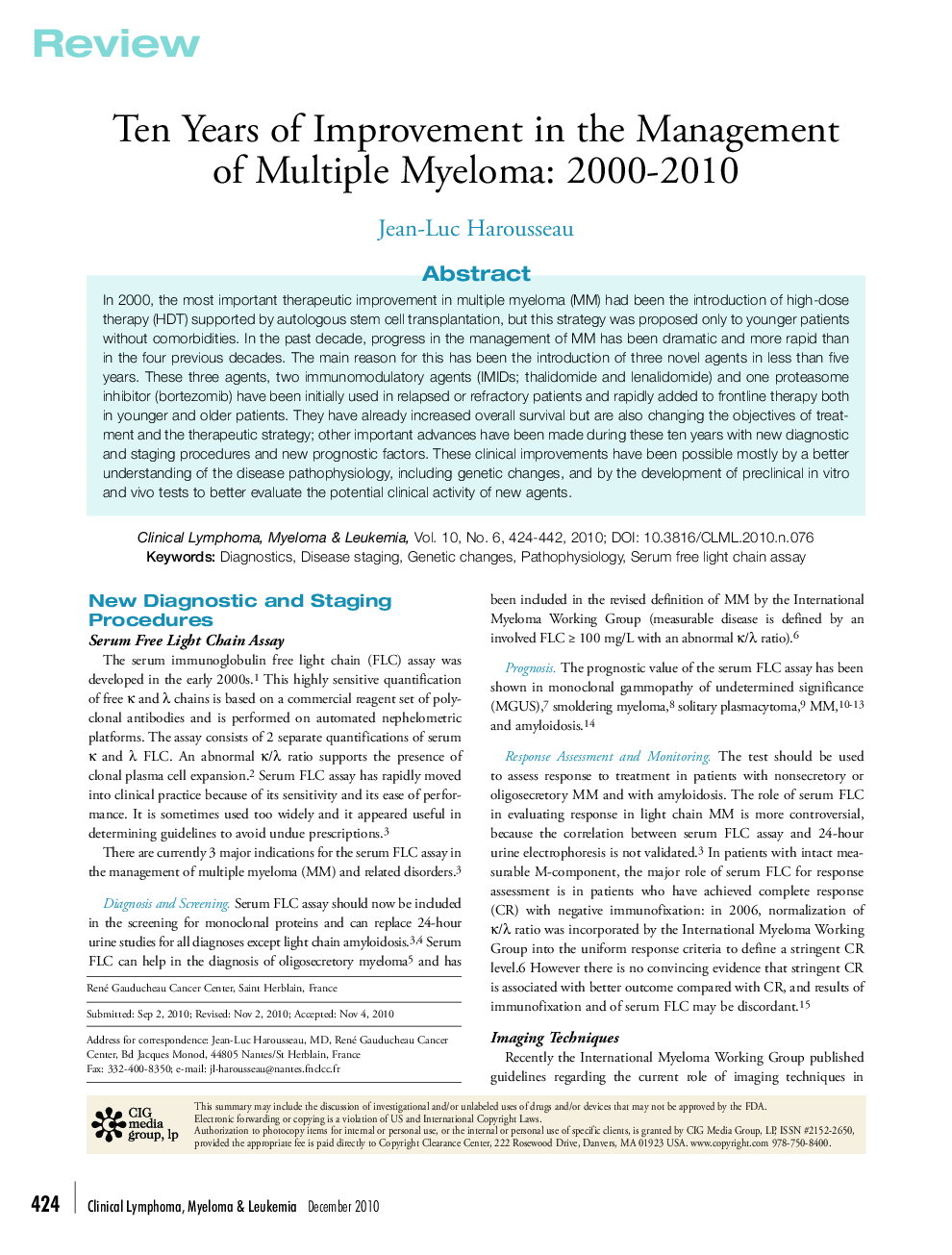| Article ID | Journal | Published Year | Pages | File Type |
|---|---|---|---|---|
| 2754752 | Clinical Lymphoma Myeloma and Leukemia | 2010 | 19 Pages |
In 2000, the most important therapeutic improvement in multiple myeloma (MM) had been the introduction of high-dose therapy (HDT) supported by autologous stem cell transplantation, but this strategy was proposed only to younger patients without comorbidities. In the past decade, progress in the management of MM has been dramatic and more rapid than in the four previous decades. The main reason for this has been the introduction of three novel agents in less than five years. These three agents, two immunomodulatory agents (IMIDs; thalidomide and lenalidomide) and one proteasome inhibitor (bortezomib) have been initially used in relapsed or refractory patients and rapidly added to frontline therapy both in younger and older patients. They have already increased overall survival but are also changing the objectives of treatment and the therapeutic strategy; other important advances have been made during these ten years with new diagnostic and staging procedures and new prognostic factors. These clinical improvements have been possible mostly by a better understanding of the disease pathophysiology, including genetic changes, and by the development of preclinical in vitro and vivo tests to better evaluate the potential clinical activity of new agents.
